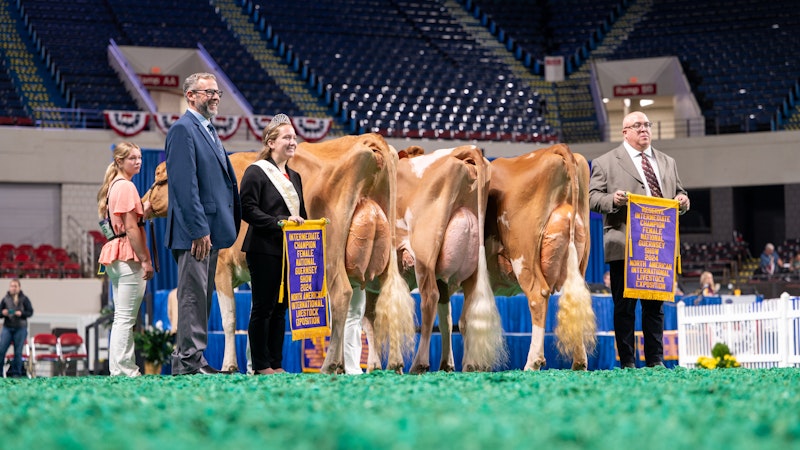Ahead of the 50th anniversary of the North American International Livestock Exposition, we sat down with a man who has been around the show since its inception -- Harold Workman. His name might sound familiar to NAILE exhibitors as he was the NAILE General Manager from 1974-2012. During his time in the role, he was inducted into the Saddle & Sirloin Portrait Gallery in 2003. Workman was instrumental in launching NAILE and bringing the Saddle & Sirloin Portrait Gallery to Louisville.
Q: How did the North American get its start?
A: I was kind of involved before it even had a date or a name or anything else. There was a group of breeders that actually talked to the International in Chicago about moving that show here, and they didn't want to do that. So those breeders decided they would talk to Governor Ford at that time to see if he'd be willing to support a major livestock show in Kentucky because we had the Kentucky Expo Center anyway, a great location for it, and he did agree to do that.
And through a press conference in 1973, in June, he announced a formation of a major livestock show and provided funding. It didn't have a name, a date, or anything else. So, myself, along with about a half a dozen other people, which included Jack Ragsdale, by the way, who is kind of our icon as you know. We actually selected the dates and put a name on it, so I guess my first involvement obviously was right there because I was with the Kentucky Department of Agriculture, and I was working the major beef shows and the swine shows for the youth across the state anyway, so I kind of fit in, I guess.
Q: How did the NAILE differ from other major livestock shows?
A: It's an exhibitor driven show. It needs to be an exhibitor driven show, and it's proven over the years that that is successful, and it has attracted a lot of other species. We went from one species in '74 to 10 species before we had it all put together, and we went from one week to two weeks and it was only because we had people who wanted to be here. They wanted to be a part of it. We had breed associations that wanted their national shows here and many of them have stayed for pretty close to 50 years, and I think it speaks to the importance of this expo to those individuals.
Q: What impact has the NAILE had on the livestock industry?
A: A lot of the beef industry and the sheep industry and the swine industry, which are your major meat industries, and of course, meat goats today, they're really set up on the purebred business. We were a purebred show. We are a purebred show. If you wanted to see the best purebred livestock show in the U. S., you would be in Louisville in November. If you were looking for the commercial side of it, you'd be in Denver in January. But, the purebred business is the beginning of the commercial business.
They've got to have the best bulls and the best females, and they look to the purebred business to see who has the cutting edge, who has the best sires. And they go select those and they buy those, and I think that we had a big influence on that as we began to grow and become a major force in the livestock industry.
Q: What's the story behind the green shavings?
A: I went to the American Royal in 1973 in Kansas City, and one of the things I noticed was that they had a green wood chip. It wasn't a shaving, it was bigger. It was a green wood chip. So I came back and I spoke to Roy Gibson, who owned Feeder Supply Company. And I said, "Roy I would love to have a green shaving for our show rings at the North American. Do you think you can do anything about it?" He said, "Well, let me look into it."
And he did. He is actually the one who perfected the green shaving for us. And of course they're used across the country now. That's actually why we had them, but I saw it at the American Royal. I wanted to introduce it to North American. We've done it for 50 years.
To listen to the interviews of other leaders at NAILE, head to the North Wing Lobby during the show and watch some of the interviews on the video wall.
















